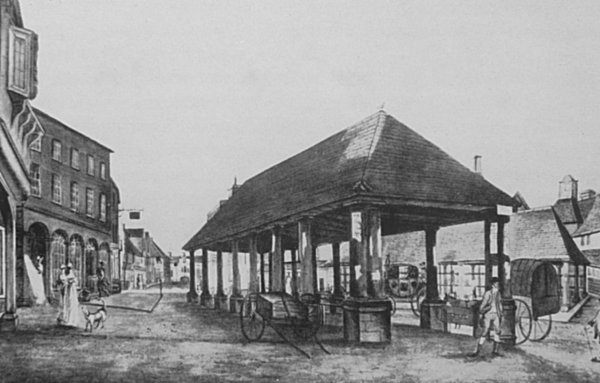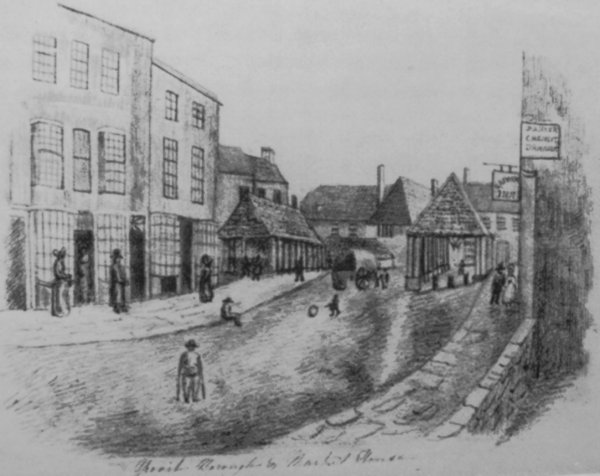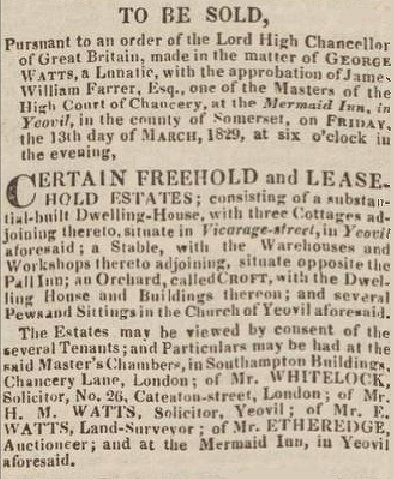yeovil people
george Bullock watts
Butcher, Glove Manufacturer and Churchwarden
George Bullock Watts was born in Yeovil in 1772, the eldest child of solicitor Samuel Watts the elder and his wife Mary née Bullock. Three of his brothers - Samuel the younger, Joseph and Thomas Bullock - became solicitors like their father but George did not enter the family business.
In the Universal British Directory of 1790 George as listed as a butcher, and in 1803 he was responsible for the building of the Butcher's Shambles that stood in the Borough.
George became a Churchwarden at St John's church in 1802 and that year, together with his co-Churchwarden William Wilmington, was instructed by the Bishop of Bath and Wells to investigate the charities in Yeovil, to enumerate donations and list them on boards to be placed in St John's church before 25 March 1803. George and William began by investigating funds that had apparently gone missing from church charities. As a consequence he was then instructed by the Vestry in his role as Churchwarden, to begin legal proceedings that turned into a complicated Chancery suit which became the Yeovil Charities Scandal.
On 13 July 1806 George married Hannah Bullock at St John's church. Hannah was, presumably, a member of George's mother's family.
George was repeatedly re-elected by the Vestry as Churchwarden because of his leading role in the Chancery suit against the abuse of power by the Yeovil charities' trustees. However, by 1813 the membership of the Vestry had changed and it seems that the political persuasion of that group had shifted in favour of the landowners accused of malpractice in the management of charity funds and, indeed, surreptitiously misappropriating charity lands and estates.
Suddenly there were objections to George Watts continuing as Churchwarden, a post he had unusually held for twelve years, and he was forced to continue the Chancery suit almost single handedly. It almost brought him financial ruin and, as a result, the Chancery proceedings were finally abandoned. One is, of course, tempted to wonder about what happened to all these charity lands since, if there was malpractice, the end of proceedings allowed to perpetrators to not only escape justice but to keep their ill-gotten gains! Just a thought.
Unfortunately George's problems were not just financial and it would seem that the years of strain and worry brought on by the Chancery proceedings had affected his mental health. In its edition of 4 July 1828, in a story that made headlines across the country, the Morning Chronicle reported "George Watts, aged 61, was indicted for maliciously shooting at Thomas Bullock Watts with a loaded pistol, with intent to murder him, on the 26th day of April.... The charge against the prisoner was that of shooting at his own brother. He certainly went to his brother's under some delusion, which appeared to be that his brother owing him a sum of money. It was but fair to say, that he (the prosecutor) believed that he at the time was labouring under mental aberration."
George was in partnership with Henry March as glove manufacturers but in June 1825 the partnership was dissolved and, sadly, George was declared insane in 1826. In his defence he said that he had been "miserably used by his family" and that he had "been stripped of all his property" and his "sufferings for years had been worse than death." (His property was, indeed, sold in 1829 - see notice below). George's brother Edward was called as a witness and said that his brother "had been in the habit of carrying pistols - that he had remonstrated with him for so doing, when he gave as a reason that he passed a place where they boiled horses and he was in fear of being thrown into the large cauldron." The jury "found the prisoner Not Guilty, but not on the ground of insanity. He was therefore discharged."
George Watts died in 1837.
gallery

A painting made in 1810 of the Borough looking towards High Street which runs to the distance at left. The building at centre was the Market House, built in 1740, and behind it to the right was the Butcher's Shambles, built in 1803 by butcher George Watts.

This sketch, probably made around 1830, shows the Borough seen from High Street - roughly the view seen today from the north end of King George Street. The Shambles is to the left and the Market House is to the right.

The notice of the sale of George Watts' properties in the 2 March 1829 edition of the Sherborne Mercury.